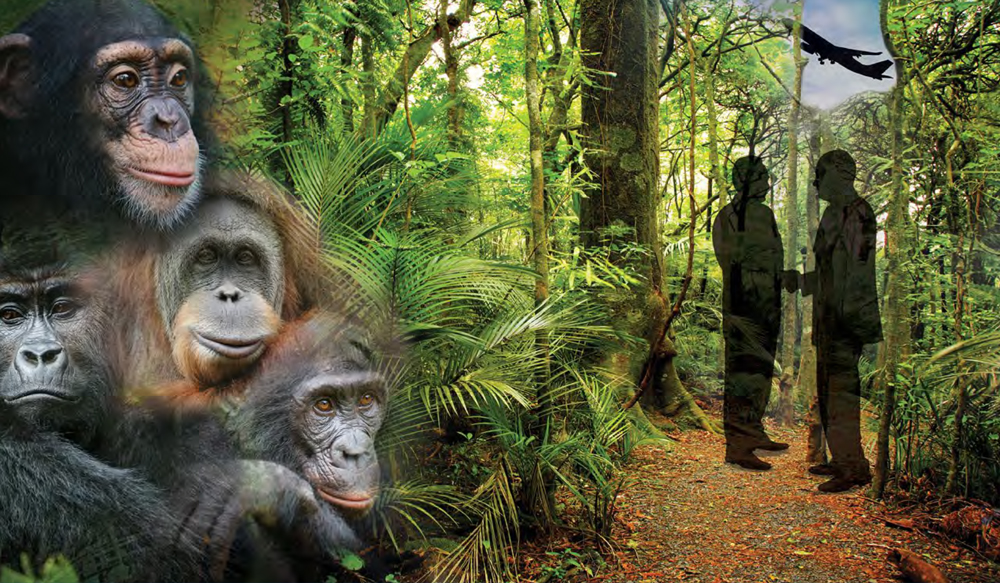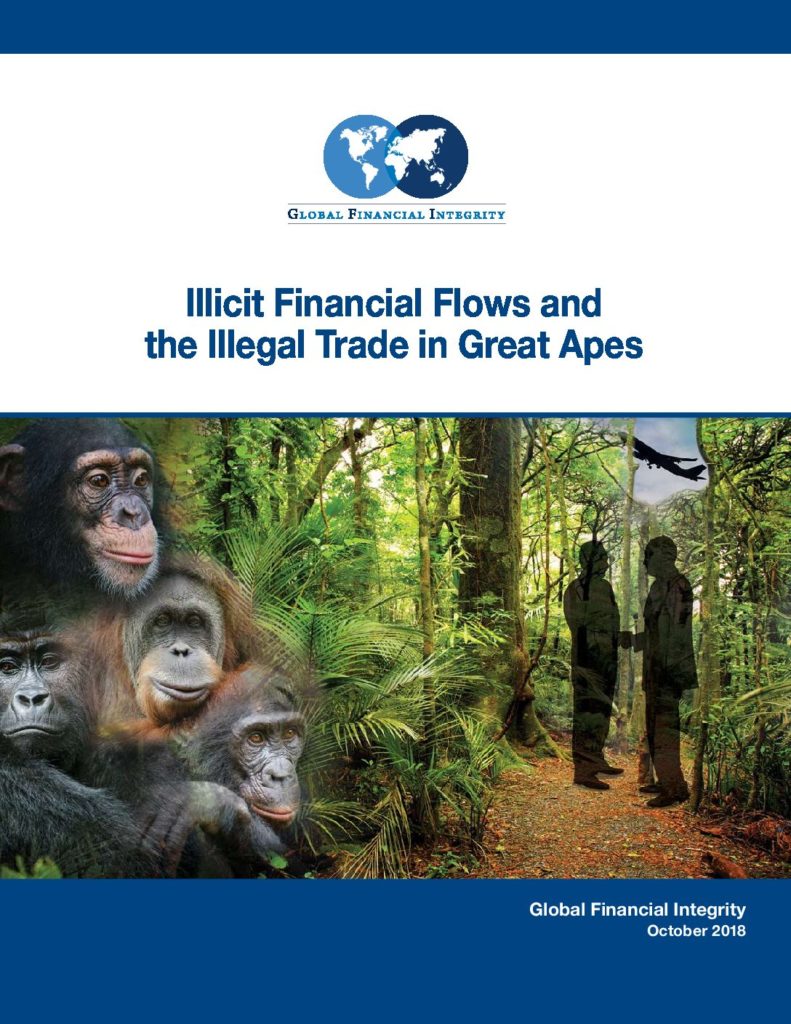Global Financial Integrity’s October 2018 report “Illicit Financial Flows and the Illegal Trade in Great Apes” studies the trafficking of great apes from source to buyer in West & Central Africa and Southeast Asia. The live trade is the most significant in terms of value, and the markets for bushmeat and body parts are linked with the highest impact on the survival of the four species—bonobos, chimpanzees, and gorillas in Africa and orangutans in Indonesia and Malaysia, all of which are endangered species.
Criminal networks of poachers, suppliers, dealers, wholesalers, and consumers make up the multimillion dollar industry in live great apes, their bushmeat, and their body parts, and investigators are missing intelligence and enforcement opportunities on these illicit financial flows. Governments, CITES, Interpol, the United Nations (UN), the World Customs Organization (WCO), and civil society organizations can increase their effectiveness in combatting the illegal great ape trade by closing information gaps, by increasing the legal risks and consequences for traffickers, dealers, and high-level consumers, and by focusing more investigative resources on the money from the illegal trade that is in the formal financial system.
Findings
Thousands of great apes are killed each year to fill the demand for pets and attractions, bushmeat, and ceremonial body parts, generating significant revenue for those who make up the illicit supply chains. Dealers are the most important actors in the illicit supply chain: they order or buy live infants and juveniles from poachers, farmers, and laborers and apply their specialized knowledge and connections to transport the animals, either to wholesalers in places like the UAE and China or directly to consumers.
The average annual value of the international market for live infants and juveniles may be up to US$2.1 million-US$8.8 million. Experts involved in a 2013 United Nations Environment Programme report estimated that around 7 bonobos, 14 gorillas, and 92 chimpanzees enter the live trade annually on average, suggesting a possible international market value of US$147,000-US$301,000 for bonobos, US$560,000-US$2.1 million per year for gorillas, and US$1.4 million-US$6.4 million for chimpanzees. The illegal market for baby orangutans is thriving with domestic and international consumers buying an estimated 146 per year on average and possibly spending US$277,000 to as much as US$10 million in total.
Recommendations
- Governments need to increase the consequences of buying or trafficking great apes illegally, so that it is no longer such a “safe” and profitable crime.
- Governments, civil society groups, and the CITES Secretariat should increase public reporting on investigations, arrests, prosecutions, and seizures in the illegal great ape trade to mobilize all stakeholders.
- Governments, civil society groups, and journalists investigating the illegal buying and selling of great apes need to include the movement of money from these activities as a core component of their investigations, because money is the key driver of these crimes.
- Participants in the illegal great ape trade are increasingly using social media to conduct business, and governments, the CITES Secretariat, civil society groups, and the private sector need to come together to deny these criminals and their buyers access to these platforms.
Methodology
To conduct the study, GFI compiled data based on publicly available documents, original interviews with experts, and special questionnaires to individuals and groups in Indonesia, Malaysia, and Central and West Africa. The report restricts estimates of market values to the international side for live bonobos, chimpanzees, and gorillas, because those transactions are the most consequential and have the most robust data. Data on bushmeat and body part sales are much more limited, so the estimates in the report lump bonobos, chimpanzees, and gorillas together; orangutans did not have sufficient data for this portion. The source of the estimates of the number of each species involved in the illegal live trade comes from Stolen Apes: The Illicit Trade in Chimpanzees, Gorillas, Bonobos and Orangutans by Daniel Stiles et al.; estimates for the number killed for the bushmeat and body part trade come from research by The Bushmeat Project.


